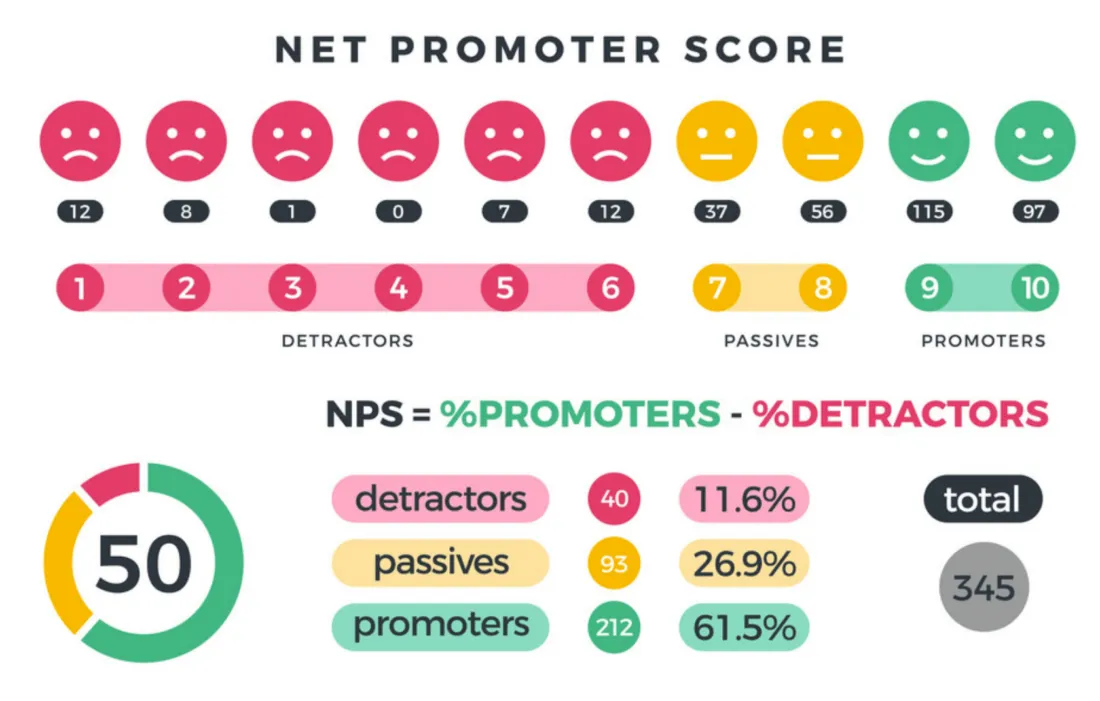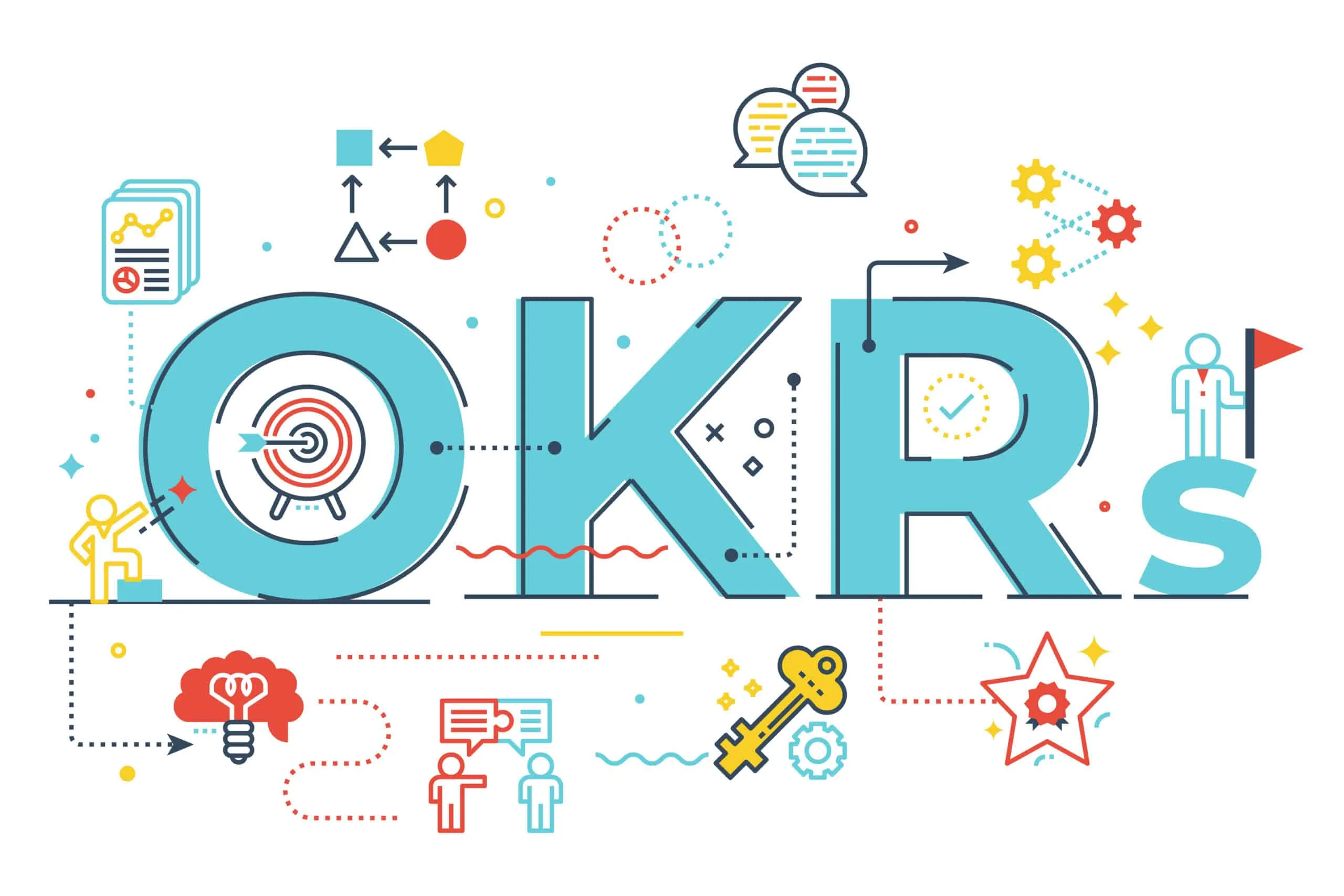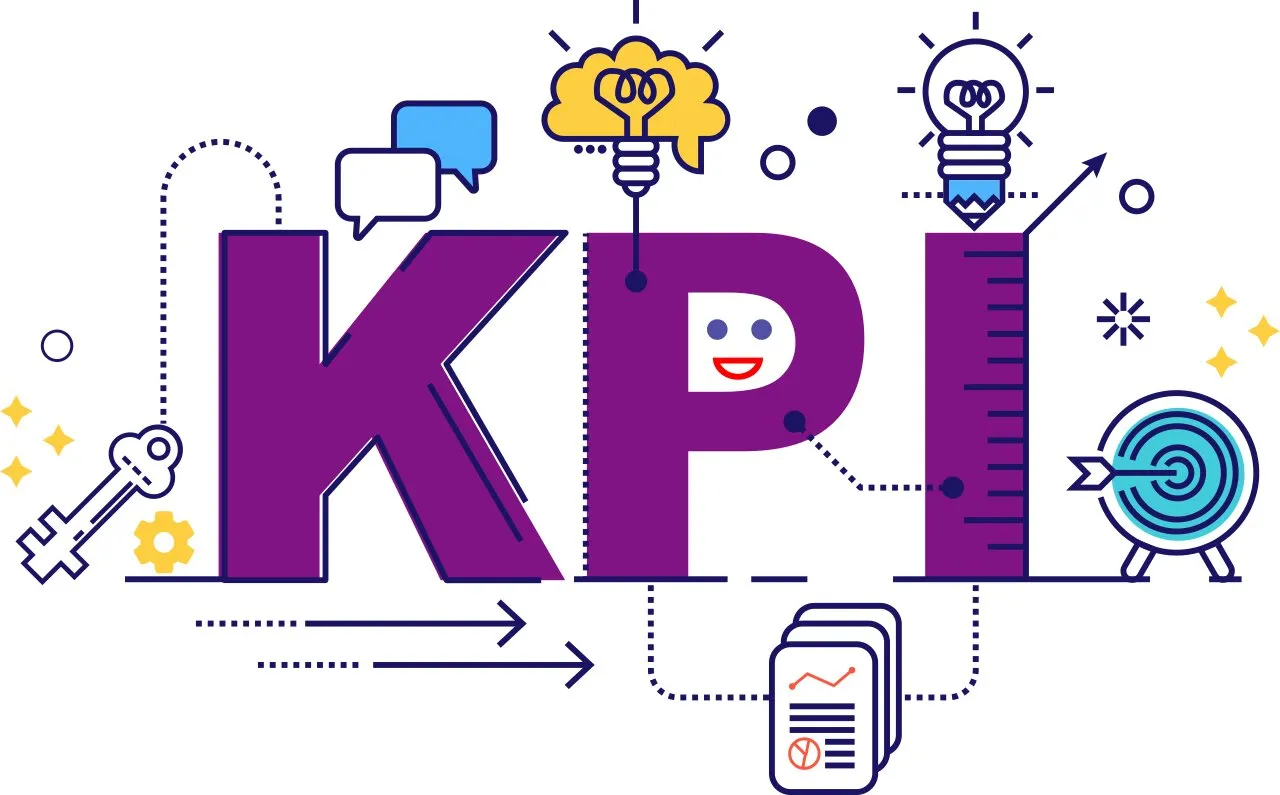NPS, KPIs and OKRs: What They Are, Their Importance and How to Apply in Practice
Discover and learn how to implement NPS, KPIs, and OKRs to drive business growth, measure customer satisfaction, and achieve strategic objectives with proven methodologies used by top companies.
If you're running a business or managing a team, you've probably wondered how successful companies like Google, Apple, and Netflix consistently deliver exceptional results while keeping their customers happy and their teams aligned. The answer lies in three powerful methodologies that have revolutionized how modern businesses measure success and drive growth.
Understanding and implementing NPS (Net Promoter Score), KPIs (Key Performance Indicators), and OKRs (Objectives and Key Results) can transform your business from a collection of disconnected activities into a well-oiled machine focused on what truly matters. These aren't just fancy acronyms – they're practical tools that can help you understand your customers better, measure what matters, and align your entire organization toward ambitious yet achievable goals.
Whether you're a startup founder trying to validate product-market fit, a manager looking to improve team performance, or an executive seeking to scale your organization, mastering these three frameworks will give you the clarity and direction needed to make informed decisions and drive sustainable growth.
Table of Contents
- What is Net Promoter Score (NPS)
- Understanding Key Performance Indicators (KPIs)
- Exploring Objectives and Key Results (OKRs)
- How to Calculate and Implement NPS
- Setting Up Effective KPIs
- Creating Powerful OKRs
- The Relationship Between NPS, KPIs, and OKRs
- Common Mistakes and How to Avoid Them
- Real-World Applications and Success Stories
What is Net Promoter Score (NPS)?
Net Promoter Score is arguably the most important customer experience metric you can track. Created by Bain & Company in 2003, NPS measures customer loyalty by asking one simple yet powerful question: "How likely are you to recommend our product/service to a friend or colleague?"
The beauty of NPS lies in its simplicity. Customers respond on a scale from 0 to 10, and based on their answers, they fall into three distinct categories. Promoters (scores 9-10) are your loyal enthusiasts who actively recommend your business. Passives (scores 7-8) are satisfied but unenthusiastic customers who might switch to competitors. Detractors (scores 0-6) are unhappy customers who can damage your brand through negative word-of-mouth.
What makes NPS so valuable is that it goes beyond measuring satisfaction – it predicts behavior. When customers are willing to put their reputation on the line by recommending your business, that's a strong signal of genuine loyalty and satisfaction. Companies like Apple, Netflix, and Amazon have built their customer-centric strategies around achieving high NPS scores, understanding that promoters drive sustainable growth through referrals and repeat purchases.
The methodology forces businesses to think holistically about the customer experience. It's not enough to have a great product if your customer service is poor, or excellent support if your pricing feels unfair. NPS reflects the entire customer journey, making it an excellent north star metric for customer experience initiatives.

Understanding Key Performance Indicators (KPIs)
Key Performance Indicators are specific, measurable metrics that help you track progress toward your most important business objectives. Unlike vanity metrics that might look impressive but don't drive real business value, KPIs are directly tied to outcomes that matter for your organization's success.
Think of KPIs as your business dashboard – they provide real-time insights into how well different aspects of your organization are performing. The key is choosing KPIs that focus on results rather than activities. For example, measuring the number of sales calls made is less valuable than measuring conversion rates or revenue per customer.
Effective KPIs share several characteristics. They're specific and quantifiable, leaving no room for interpretation. They're relevant to your business goals, directly connecting to outcomes you care about. They're achievable yet challenging, pushing your team to improve without being demotivating. And they're time-bound, with clear deadlines that create urgency and accountability.
Different departments typically track different KPIs. Marketing teams might focus on customer acquisition cost (CAC) and conversion rates. Sales teams track deal closure rates and average deal size. Product teams monitor user engagement and feature adoption. The key is ensuring all KPIs ladder up to your broader business objectives, as discussed in resources like The ONE Thing: The Surprisingly Simple Truth About Extraordinary Results, which emphasizes focusing on what truly drives results.
Exploring Objectives and Key Results (OKRs)
OKRs represent a goal-setting framework that has powered the growth of companies like Google, LinkedIn, and Spotify. The methodology consists of Objectives – qualitative, inspirational statements about what you want to achieve – paired with Key Results – quantitative measures that indicate whether you're making progress toward those objectives.
What makes OKRs powerful is their combination of ambition and measurement. Objectives should be memorable, inspirational, and challenging – they're your "moon shots" that push the organization to think bigger. Key Results, on the other hand, are specific, time-bound, and measurable outcomes that serve as proof points for achieving your objectives.
The framework encourages what Google calls "ambitious goal-setting." Teams are expected to achieve about 70% of their OKRs on average. This might seem like failure, but it's actually by design – it ensures teams are setting goals that stretch their capabilities and drive innovation rather than playing it safe with easily achievable targets.
OKRs also promote transparency and alignment. When everyone in the organization can see what others are working toward, it becomes easier to collaborate, avoid duplication of effort, and ensure all activities support the company's strategic direction. This alignment is crucial for scaling businesses, as detailed in Blue Ocean Strategy, Expanded Edition: How to Create Uncontested Market Space and Make the Competition Irrelevant.
How to Calculate and Implement NPS
Calculating your NPS is straightforward: subtract the percentage of detractors from the percentage of promoters. If 60% of your customers are promoters and 10% are detractors, your NPS is 50. Passives don't factor into the calculation, though they represent an opportunity for improvement.
But the real value of NPS comes from what you do with the data. The follow-up question is often more important than the score itself: "What's the primary reason for your score?" This qualitative feedback reveals the specific drivers behind customer sentiment and provides actionable insights for improvement.
Implementing NPS effectively requires thoughtful timing and frequency. Relationship NPS surveys, sent quarterly or annually, measure overall sentiment toward your brand. These provide a pulse check on customer health and benchmark for year-over-year improvement. Avoid transactional NPS surveys sent after every interaction – they can annoy customers and don't align with NPS's purpose of measuring overall relationships.
The key to NPS success lies in closing the feedback loop. When detractors share their concerns, reach out to address their issues. When promoters explain what they love, double down on those strengths. Companies that actively respond to NPS feedback see significantly higher scores over time, as customers appreciate being heard and seeing improvements based on their input.

Setting Up Effective KPIs
Choosing the right KPIs requires deep understanding of your business model and strategic priorities. Start by identifying your most critical business outcomes – revenue growth, customer retention, operational efficiency, or market expansion. Then work backward to identify the metrics that most directly influence these outcomes.
Avoid the trap of tracking too many KPIs. When everything is important, nothing is important. Most successful organizations focus on 3-5 primary KPIs that roll up to executive dashboards, with additional supporting metrics tracked at the departmental level. This focus ensures everyone understands what matters most and can align their efforts accordingly.
Different business models require different KPI approaches. SaaS companies typically focus on Monthly Recurring Revenue (MRR), churn rate, and customer lifetime value. E-commerce businesses track conversion rates, average order value, and customer acquisition costs. Service businesses might emphasize utilization rates, customer satisfaction scores, and profit margins.
The most effective KPIs tell a story when viewed together. For example, tracking customer acquisition cost alongside lifetime value reveals whether your marketing investments generate profitable growth. Monitoring both revenue growth and customer satisfaction ensures you're not sacrificing long-term relationships for short-term gains. This balanced approach to measurement is explored in depth in Morgan Housel's "The Psychology of Money" Book, which discusses how different metrics can tell different stories about the same underlying reality.
Creating Powerful OKRs
Writing effective OKRs is both an art and a science. Objectives should answer the question "Where do we want to go?" while Key Results answer "How will we know we got there?" The best objectives are inspirational and qualitative, using language that energizes and motivates teams rather than corporate jargon that puts people to sleep.
For example, instead of "Improve customer metrics," try "Delight customers so much they can't stop talking about us." Instead of "Increase market presence," consider "Become the go-to solution in our industry." These objectives paint a vivid picture of success that teams can rally around.
Key Results should be specific, measurable, and time-bound. Each objective typically has 2-5 Key Results – fewer than 2 doesn't provide enough measurement granularity, while more than 5 creates too much complexity and dilutes focus. Prioritize your Key Results so teams know which matters most when trade-offs are necessary.
The quarterly cadence of OKRs allows for agility while maintaining strategic focus. At the end of each quarter, teams should reflect on what they learned, celebrate achievements, and adjust their approach for the next quarter based on new information or changing market conditions. This iterative approach ensures OKRs remain relevant and challenging without becoming stale or disconnected from reality.
The Relationship Between NPS, KPIs, and OKRs
While these three frameworks serve different purposes, they work together synergistically when implemented thoughtfully. NPS provides the customer perspective, revealing how your efforts translate into customer satisfaction and loyalty. KPIs offer operational insights, showing whether your processes and activities are driving the results you want. OKRs create strategic alignment, ensuring everyone works toward the same ambitious goals.
In practice, your OKRs might include improving NPS as a Key Result, while specific KPIs help you track progress toward that goal. For example, if your objective is "Create an exceptional customer experience," your Key Results might include "Increase NPS from 30 to 50" and "Reduce customer service response time to under 2 hours." Supporting KPIs might track first-call resolution rates, support ticket volume, and customer satisfaction scores.
This integration prevents the common problem of optimizing for metrics that don't actually improve business outcomes. When your OKRs focus on ambitious customer and business outcomes, your KPIs naturally align with activities that drive real value, and your NPS reflects whether you're succeeding in creating customer value.
The key is ensuring these frameworks complement rather than compete with each other. Teams shouldn't feel torn between hitting their KPI targets and achieving their OKRs – both should point in the same direction toward creating customer and business value.

Common Mistakes and How to Avoid Them
One of the biggest mistakes organizations make is treating these frameworks as one-time implementations rather than ongoing practices. NPS without action is just data collection. If you're not prepared to address detractor feedback and amplify promoter experiences, you're wasting everyone's time. Similarly, KPIs that aren't regularly reviewed and acted upon become stale dashboard decorations.
Another common pitfall is choosing vanity metrics over value metrics. Social media followers, website traffic, and email subscribers might look impressive, but they don't necessarily drive business results. Focus on metrics that directly correlate with customer value and business outcomes, even if the numbers aren't as impressive initially.
With OKRs, many teams set objectives that are either too easy or impossibly difficult. The sweet spot is ambitious but achievable goals that stretch the team's capabilities without being demotivating. As discussed in The Subtle Art of Not Giving a F*ck, focusing on what truly matters requires saying no to what doesn't.
Avoid the temptation to track everything. More data doesn't automatically lead to better decisions – it often leads to analysis paralysis. Choose fewer, more meaningful metrics and commit to acting on the insights they provide. Quality of measurement beats quantity every time.
Real-World Applications and Success Stories
Companies across industries have successfully implemented these frameworks to drive remarkable results. Netflix famously uses NPS to guide content strategy, understanding that highly satisfied customers are more likely to maintain subscriptions and recommend the service to others. Their focus on customer satisfaction has helped them dominate the streaming market despite intense competition.
Google's use of OKRs is legendary – the framework helped them scale from a startup to one of the world's most valuable companies while maintaining innovation and agility. By setting ambitious quarterly objectives and measuring progress through specific Key Results, Google ensures all employees understand how their work contributes to company success.
Startups have found particular success combining all three frameworks. A early-stage SaaS company might set an OKR to "Build a product customers love," with Key Results including "Achieve NPS of 50+" and "Maintain monthly churn below 5%." Their KPIs would track leading indicators like product engagement, support ticket volume, and feature adoption rates.
The key to success is starting simple and iterating based on what you learn. Don't try to implement perfect systems immediately – focus on getting basic measurement in place, then refine your approach based on what the data tells you about your business and customers.
For deeper insights into building sustainable business practices, consider reading Dotcom Secrets: The Underground Playbook for Growing Your Company Online with Sales Funnels and The Challenger Sale: Taking Control of the Customer Conversation, which provide frameworks for customer-centric growth.
Taking Action: Your Next Steps
Understanding NPS, KPIs, and OKRs is just the beginning – the real value comes from implementation. Start by identifying which framework addresses your most pressing business need. If you're struggling with customer retention, begin with NPS to understand customer sentiment. If you need better operational visibility, establish key KPIs for your most important processes. If your team lacks strategic alignment, implement OKRs to create shared focus.
Remember that these frameworks are tools, not destinations. The goal isn't to have perfect NPS scores, KPIs, or OKRs – it's to build a business that consistently creates value for customers and stakeholders. Use these measurements to guide decisions, spark conversations, and drive improvements, but don't let them become bureaucratic burdens that slow down progress.
Most importantly, involve your team in selecting and refining these metrics. When people understand why certain measurements matter and have input into how success is defined, they're much more likely to take ownership of results. The best measurement systems are collaborative efforts that reflect collective wisdom about what drives success.
The businesses that thrive in today's competitive landscape are those that can quickly identify what's working, what isn't, and what needs to change. By mastering NPS, KPIs, and OKRs, you'll have the measurement foundation needed to make those critical decisions with confidence and speed.
Start small, measure consistently, and iterate based on what you learn. Your customers, team, and bottom line will thank you for the clarity and focus these frameworks provide. The question isn't whether you can afford to implement these measurement systems – it's whether you can afford not to in an increasingly competitive business environment.
Looking to dive deeper into business strategy and growth? Check out our related guides on cash flow management and achieving financial independence to build a more complete picture of business success.

